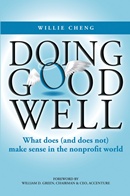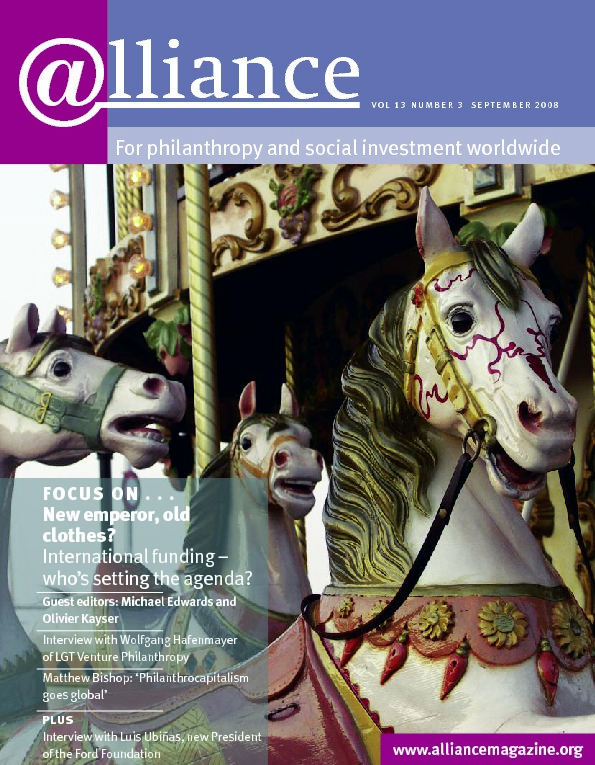 In this, his first book, Willie Cheng draws on his experience, both as a partner and managing director of the Singapore branch of the global management consulting, technology services and outsourcing firm Accenture and as the Chair of the National Volunteer and Philanthropy Center in Singapore, to explain and provide new perspectives on the principles and thinking behind the working of the non-profit sector.
In this, his first book, Willie Cheng draws on his experience, both as a partner and managing director of the Singapore branch of the global management consulting, technology services and outsourcing firm Accenture and as the Chair of the National Volunteer and Philanthropy Center in Singapore, to explain and provide new perspectives on the principles and thinking behind the working of the non-profit sector.
The book’s 20 chapters look into the non-profit sector’s structure, governance and management; philanthropic giving and volunteerism; and social entrepreneurship and enterprise. Along the way, various concepts and paradigms informing the sector are explained and challenged.
For example, says Cheng, in the commercial world, customers, in choosing which services or goods to buy, decide which businesses provide what they need at the most acceptable quality and price, and thus which ones will survive. This is not so in the non-profit world where there is often a disconnect between what a non-profit actually delivers and how successful it is at fundraising. The solution often proposed is ‘informed giving’, with donors being more careful and more demanding. However, there is empirical evidence that most people do not give primarily for public benefit but rather for private benefits such as feeling good and recognition. Thus, they cannot be expected to be informed givers.
Cheng then suggests the stock exchange as an analogy for the ideal non-profit sector, comparing non-profit organizations to public listed companies, which must be transparent and accountable. But since the public have little time or motivation to properly ‘invest their funds’, fund managers (grantmakers or foundations and funds) collect money from the giving public and ‘invest’ it in the appropriate non-profits. At the same time, there should be many ‘stock analysts’ or non-profit sector watchers who scan, evaluate and rate (and accredit or certify) non-profits.
The book also takes issue with non-profits following the business dictate of ‘growth, growth and more growth’. The measure of success for a non-profit should be the achievement of its intended societal change (lowering corruption or providing sanitary toilets or ensuring migrant workers’ rights, etc) – in other words, its eventual extinction.
It also tackles other non-profit concerns such as the ‘problem of plenty’ (what level of financial reserves is ideal? Or should there be no reserves to ensure the non-profit organization’s relevance and accountability?). On the supply side or the giving side, he remarks, much attention is given to the few ‘big donors’, even if surveys in various countries show that the higher income earners give less as a proportion of their income than those who earn less. On the demand side, or the side of the non-profits and their beneficiaries, Cheng points out that the expansion of the definition of ‘charity’ or non-profit work from helping the poor and needy to the general good of the community (for instance, promotion of education, religion, health, arts, heritage, sports) has meant in many cases that the more focused work for the poorer sectors has been losing out to these more popular causes.
The book also has several useful chapters on giving, including one on the new philanthropists who Cheng describes as more ambitious, more capitalistic and more personally engaged. These include Ted Turner, Bill and Melinda Gates, Warren Buffett, and Asia’s Li Ka-Shing, who announced in August 2006 his intention to donate at least one-third of his wealth (valued at US$19 billion) to his foundation.
Not all of Cheng’s assertions would be readily accepted by those in the non-profit sector. He says, for example, that the gap between the pay of those in the sector compared to their counterparts in the commercial sector may be explained by the ‘heart factor’ of altruism and volunteerism and the ‘head factor’ of a ‘slower pace and less demanding expectations’ in the non-profit sector. This ‘head factor’ would certainly be challenged by non-profit staff helping traumatized children, organizing landless farmers and labourers, and doing advocacy and other stressful and dangerous work.
Whether one agrees with Cheng’s views or not, the book is easy to read and provides useful examples and data. It creates good take-off points for introspection and discussion for those involved in the sector, which is important to the sector’s aim ‘to change for the better itself – at the same time as it goes about … changing the rest of the world’.
Sixdon Macasaet is Executive Director, Caucus of Development NGO Networks (CODE-NGO), Philippines. Email scmacasaet@codengo.org
Doing Good Well: What does (and does not) make sense in the nonprofit world
Willie Cheng Jossey-Bass US$29.95/ €23.80/ £18.99
ISBN 9780470823897
To order
http://www.wiley.com






Comments (0)